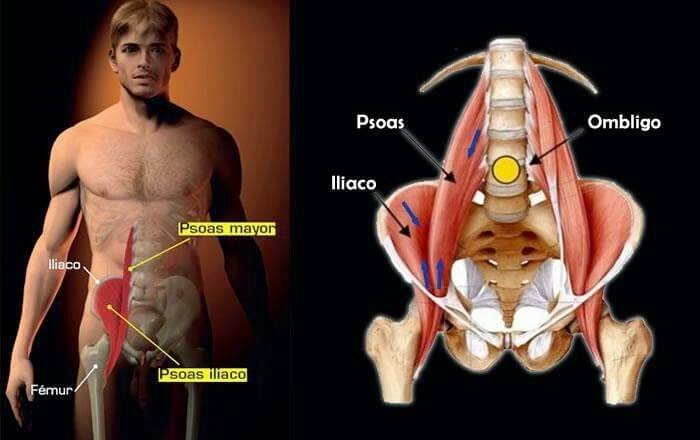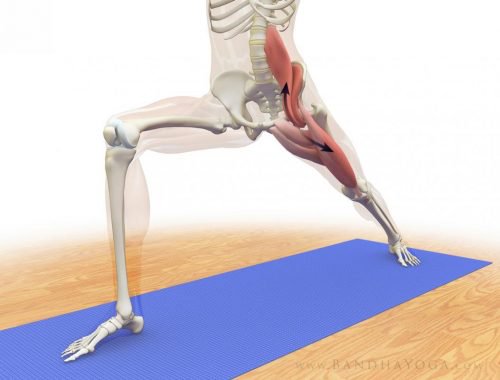Everything You Need to Know About the Psoas Major


Written and verified by psychologist Valeria Sabater
The psoas major is a muscle that’s located along the length of the lumbar region. It’s interesting to know that it’s the largest and strongest muscle, also known as hip flexors.
These are the muscles that enable us to carry out actions as simple as walking, cycling, lying down, getting up, dancing, stretching, squatting and the majority of the classic yoga exercises.
Curiously, as we mentioned in the title, you’ll also be interested to know that the psoas major is commonly known as the “muscle of the soul.”
The reason for this both evocative and poetic term is based on two key factors:
- This muscle is one of the deepest muscles of our body. It promotes movement, it’s most important function is keeping us stable.
- It has a lot to do with our emotional world, with the function of releasing tensions, channeling stress and anxiety, etc.
If you’ve never heard of this muscle, we’re sure you’ll find this information interesting.
The psoas major and our emotional world

This structure contributes to our balance and ability to make broad movements.
We don’t perceive it, and if we’ve never heard of it we can’t even locate it. But in reality, we all notice its presence each time we spend a long time sitting down and our back aches.
We notice it when we suffer from lower back pain, when the pelvis hurts and when we feel shooting pains between our spinal discs.
Between the diaphragm and the pelvic floor: protection, stability, and well-being
The psoas major sits right there in the most intimate area of our body. It’s connected to the diaphragm and the pelvic floor, and divided into two parts:
- One deep part, going from the first to the fifth lumbar vertebrae.
- One more superficial part, in the vertebrae of the thorax.
It is also worth mentioning that it not only helps us to stabilize the spinal column but it’s also essential to provide a good “fastening” for the abdominal organs.
- As well as being a muscle, the psoas major acts as a messenger for the central nervous system.
- This structure is the messenger for many of the emotions that we feel intensely in the stomach (sometimes known as the “second brain”) given that it’s connected with the diaphragm thought the connective tissue or fascia.
- So, this muscle is frequently involved with aspects as basic as breathing or fear reflexes, stress and anxiety.
- Thus, an accelerated lifestyle, characterized by high doses of cortisol and adrenaline in the blood, will make the psoas major tense up.
- It prepares us for the flight response, to escape from things that the brain interprets as harmful or dangerous.
- If we sustain a state of high anxiety or stress during several weeks or months, this muscle will end up hardening.
When the psoas major hardens, back pain, sciatica. and digestive problems will arise; also, we can even suffer from more painful menstruation…
Read also:

The need to care for and pay attention to the psoas major
Negative emotions sustained over a long period of time are not the only thing that affects this muscle’s resistance and elasticity.
- A sedentary lifestyle and bad postures also affect the psoas major and influence back pain and other medical conditions.
What can we do to care for our muscle of the soul?
We’ll explain below.
Discover:
Appropriate exercises

Many yoga exercises seek to re-balance, care for and strengthen the psoas major.
- Any stretch that involves the groin area and waist will allow the tension to flow out of this fantastic muscle.
- A “liberated” psoas will help us to strengthen our muscles, feel our legs lighter and our pelvis more flexible, agile…
- So, the ideal thing is to practice appropriate stretches every single day.
Bring your knee to your chest, or lie face down while you rotate your hips and move your knee to one side and then the other.
As we said, any yoga exercise will be positive and beneficial for you. You will also improve the function of your abdominal organs, caring for your breathing, digestion and heart.

In conclusion, we can never do too much for these muscles that do so much for our well being.
For many oriental philosophies, the psoas major is the organ that channels energy and connects us to the earth; it is the structure that gives us balance and vitality.
So why not care for it a bit better? The effort is worth it.
All cited sources were thoroughly reviewed by our team to ensure their quality, reliability, currency, and validity. The bibliography of this article was considered reliable and of academic or scientific accuracy.
-
Sajko, S., & Stuber, K. (2009). Psoas Major: a case report and review of its anatomy, biomechanics, and clinical implications. The Journal of the Canadian Chiropractic Association.
-
Wettstein, M., Jung, J., & Dienst, M. (2006). Arthroscopic Psoas Tenotomy. Arthroscopy – Journal of Arthroscopic and Related Surgery. https://doi.org/10.1016/j.arthro.2005.12.064
-
Mannion, S. (2007). Psoas compartment block. Continuing Education in Anaesthesia, Critical Care and Pain. https://doi.org/10.1093/bjaceaccp/mkm029
This text is provided for informational purposes only and does not replace consultation with a professional. If in doubt, consult your specialist.








